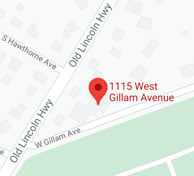Your HVAC system is one of the most valuable and expensive appliances in your home. Whether it’s a high-efficiency air conditioner, heat pump, or furnace, it keeps your family comfortable year-round. But during a thunderstorm, your HVAC system is also one of the most vulnerable to power surges caused by lightning strikes and grid disruptions.
A single surge can destroy sensitive electronics inside your HVAC system, leading to costly repairs or even a full replacement. The good news? You can prevent this with a simple, affordable solution: installing a surge protector on the disconnect of your HVAC system.
How Storms Put Your HVAC System at Risk
During a storm, your home is exposed to dangerous electrical fluctuations, including:
-
Lightning strikes near your home that travel through power lines.
-
Utility grid disruptions that create sudden spikes when power is restored.
-
Voltage fluctuations from damaged transformers or fallen power lines.
Your HVAC system’s compressor, circuit boards, thermostat, and motors are all sensitive to even brief surges. Without protection, you could lose:
-
Your air conditioner or heat pump compressor (one of the most expensive parts to replace)
-
Electronic control boards that regulate your system
-
Smart thermostats and Wi-Fi modules
-
Surge-sensitive components like blower motors
Replacing these parts can cost hundreds or even thousands of dollars.
How an HVAC Surge Protector Works
An HVAC surge protector is installed right at your outdoor unit’s disconnect box. It:
-
Absorbs and redirects excess voltage from a surge before it reaches your HVAC system.
-
Shields sensitive electronics like your compressor and control board.
-
Sacrifices itself, not your HVAC system, in the event of a massive surge.
It’s similar to a power strip for your electronics—but designed for the higher voltage and amperage of your heating and cooling system.
Why Whole-Home Surge Protection Isn’t Always Enough
Even if you have a whole-home surge protector, it may not provide complete protection for large appliances like your HVAC system. Adding a dedicated surge protector directly at the HVAC disconnect gives you an extra layer of defense right where it’s needed most.
Think of it as wearing both a seatbelt and an airbag - you get the ultimate protection from unexpected impacts.
Protecting Your HVAC System Saves Money
A surge protector costs a fraction of what you’d pay to replace a compressor or control board. For example:
-
Surge protector installation: typically a few hundred dollars
-
New compressor replacement: $2,000–$4,000+
-
Control board replacement: $500–$1,500
A surge protector is a small investment that safeguards one of your home’s most valuable assets. Additionally, most HVAC manufacturers will not cover replacement costs if your system is damaged by a power surge, unless a surge protector was already in place.
Extra Tips for Storm Safety
While a surge protector is your best defense, you can take a few extra precautions during extreme weather:
-
Turn off your HVAC system during a major lightning storm.
-
Unplug sensitive electronics like smart thermostats if possible.
-
Consider a whole-home surge protector for added protection on all circuits.
Keep Your HVAC System Safe Year-Round
Storms are unpredictable, but protecting your HVAC system doesn’t have to be. Installing a surge protector on the disconnect of your HVAC system ensures that lightning or grid surges don’t wipe out your investment.
Want to protect your heating and cooling system from storm damage? Schedule an HVAC surge protector installation today and get peace of mind before the next storm hits.
If you live in the Delaware Valley/Greater Philadelphia area and would like to find comfort within your home, visit our website or give us a call at 215 - 245 - 3200 to learn more.




